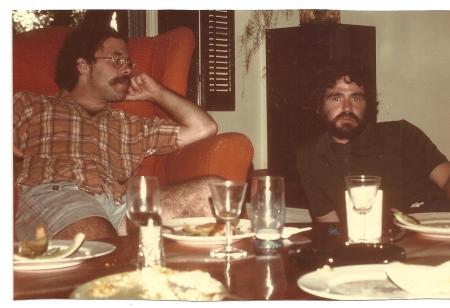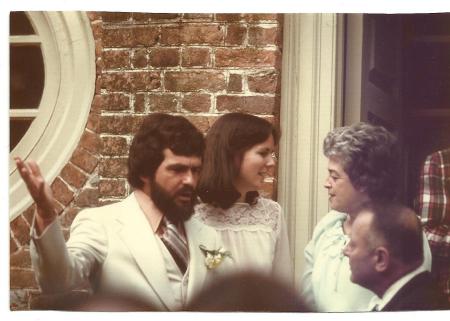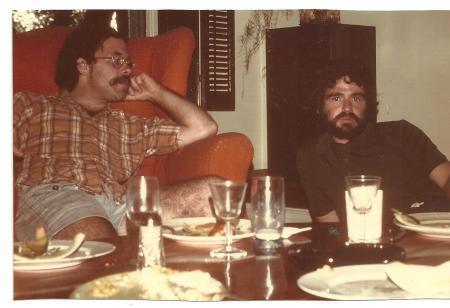Joe Whitehurst:
CLASS OF 1960

Hampton High SchoolClass of 1960
Hampton, VA
Joe's Story
Joe lives in Atlanta, Georgia. His schools include Hampton High School and a university or two. He will present a paper in Washington, DC.on March 24 at 10:30am that you all are invited to attend. Here is the abstract of the paper:
ABSTRACT
The Affordable Care Act (ACA) contains provisions that have stimulated interest in analytics among healthcare providers, especially those provisions that address quality of outcomes. High Impact Technologies (HIT) has been addressing these issues since before passage of the ACA and has a Health Care Data Model recognized by Gartner and implemented at several healthcare providers. Recently, HIT acquired SASÃÂÃÂÃÂîVisual Analytics, and this paper reports our successful efforts to use SAS Visual Analytics for visually exploring ÃÂâÃÂÃÂÃÂÃÂBig DataÃÂâÃÂÃÂÃÂàfor healthcare providers. Healthcare providers can suffer significant financial penalties for readmission rates above a certain threshold and other penalties related to quality of care. We have been able to use SAS Visual Analytics, coupled with our experience gained from implementing the HIT Healthcare Data Model at a number of Healthcare providers, to identify clinical measures that are significant predictors for readmission. As a result, we can help healthcare providers reduce the rate of 30-day readmissions.
My latest published paper prepared for this International Congress herts DOT ac DOT pcp DOT pcp: 70 DOT 88 DOT 183 DOT 165. Just replace all the instances of " DOT " with periods and add this, "SLASH training SLASH KellianMindExplorer DOT pdf" to the second IP address and change SLASH to / if you are interested.
Outline of paper I will present at IMPS 2016.
I. Brief overview of Personal Construct Theory
PHILOSOPHICAL POSITION
Like other theories, the psychology of personal constructs is the implementation of a philosophical assumption. In this case, the assumption is that whatever nature may be, or howsoever the quest for truth will turn out in the end, the events we face today are subject to as great a variety of construction as our wits will enable us to contrive. This is not to say that one construction is as good as any other, nor is it to deny that at some infinite point in time human vision will behold reality out to the utmost reaches of existence.
But it does remind us that all our present perceptions are open to question and reconsideration, and it does broadly suggest that even the most obvious occurrences of everyday life might appear utterly transformed if we were inventive enough to construe them differently.
Explication of the Nature of a Personal Construct
From the time of Aristotle we have understood propositional speech as a way of denoting entities. We may say, "A is B." This statement is a way of asserting a conclusion the antithesis of which would have been to say, "A is not B." This is a familiar logical form and its intrinsic validity is generally taken for granted. But we can look at this matter as psychologists and pose a scientific question about it. When one says that "A is B," is he, in fact, merely abandoning the alternative proposition that "A is not B?" Or is he, in fact, denying some other alternative? This is a question about human behavior, not a question of classical logic. Since it is a question about human behavior, it should be open to psychological examination.
Experience with clients undergoing psychotherapy, as well as with persons in the process of changing their lives under other conditions, leads one to suspect that a person never makes his choice merely between an entity and a non-entity. When he says that "A is B" it seems that he is also asserting that "A is not C." The choice he makes is not, therefore, between "B" and "not-B," but between "B" and "C"âbetween two entities. Let us call this "the double entity choice," to distinguish it from "the single entity choice" envisioned by classical logic.
If you prefer, we can state this observation in behavioral terms. We may then say that a person never chooses between behaving in a certain way and not behaving at all. Rather, he chooses between one behavior and another, He does not choose between activity and inactivity; instead, he chooses between alternative kinds of activity.
II. Fundamental postulate: "A person's processes are psychologically channelized by the ways in which he [or she] anticipates events."
The construction corollary: "a person anticipates events by construing their replications." This means that individuals anticipate events in their social world by perceiving a similarity with a past event (construing a replication).
The experience corollary: "a person's construction system varies as he successively construes the replication of events."
The dichotomy corollary: "a person's construction system is composed of a finite number of dichotomous constructs."
The organization corollary: "each person characteristically evolves, for his convenience in anticipating events, a construction system embracing ordinal relationships between constructs."
The range corollary: "a construct is convenient for the anticipation of a finite range of events only."
The modulation corollary: "the variation in a person's construction system is limited by the permeability of the constructs within whose range of convenience the variants lie."
The choice corollary: "a person chooses for himself that alternative in a dichotomized construct through which he anticipates the greater possibility for extension and definition of his system."
The individuality corollary: "persons differ from each other in their construction of events."
The commonality corollary: "to the extent that one person employs a construction of experience which is similar to that employed by anoth...Expand for more
er, his psychological processes are similar to the other person."
The fragmentation corollary: "a person may successively employ a variety of construction subsystems which are inferentially incompatible with each other."
The sociality corollary: "to the extent that one person construes the construction processes of another, he may play a role in a social process involving the other person."
III. Demonstration of the theoretically derived methodology for eliciting an individualâs Personal Construct SystemâFor the paper I will use Adobe Captivate to capture the application demonstrations.
IV. Demonstration of the use of the theoretically derived methodology with groupsâthe on-line Political Focus Group
V. Explanation of the data collected and a link to download the data (hand-out)
VI. Overview of Three-Mode Analyses including Biplots
Ways and modes and data
Before talking about analysis first a word about terminology. Two, seemingly similar words are used when discussion the topic of three-mode or three-way analysis. The term, way, indicates the number of dimensions of a data box: one-way refers to a vector, two-way to a matrix, and three-way to an array, which is the word used for a data box with three dimensions. The second term, mode, refers to the content of a way. Within personality construct theory the data matrix of a single person has concepts as rows and variables or scales as columns. Three-way data boxes in the theory consist of a matrix for each individual; basically a box with index cards one for each individual. Hence, such data are three-way three-mode data. By way of contrast, a set of correlation matrices has three ways but it is only two-mode, as the rows and columns both consist of the same entities, mostly variables. Thus, the word 'way' is structural and the word 'mode' is conceptual.
What is three-mode component analysis?
Ordinary or two-mode principal component analysis (see Figure 1) is based on the singular value decomposition, which for a concept by scale data matrix has concept components and scale components plus the singular values (the square roots of the eigenvalues). Each concept component is uniquely linked to a scale component, so that they can be portrayed in the same graph, and the size of the singular values indicates the strengths of the links between the two types of components or in a more common conceptualization the variance of the components.
Generalizing this idea to the analysis of three-way data â concepts by scales by individuals (or raters), we have to add the rate components to the analysis. Again we can define links, but now for three sets of components; such links are referred to as three-way singular values or, in the standard jargon, as elements of the core array (see Figure 2). The three-mode component model, now mostly called the Tucker3 model, was introduced by Tucker in 1963, and he gave a full mathematical exposition in Psychometrika in 1966. Tucker also coined the word core array to indicate that the links in the core array play a fundamental role in modelling the relationships between the components of the three ways. There are other three-mode and three-way models but they will not be discussed here.
X = A G B'
Figure 1. The two-way Singular Value Decomposition for a two-way data matrix X. A = S Concept components; B = S Scale components; G = S ÃS diagonal core matrix with the S links (singular values) between the components from the two modes. Principal component analysis: X = AF' with F = BG
Figure 2. The Tucker3 model for the three-way data array X. A = P Concept components; B = Q Rater components; C= R Rater components; G = P Ã Q Ã R Core array with the links (three-way singular values) between the components from the three modes. There are K individuals or raters. P, Q, and R are not necessarily equal.
Biplot
Biplots are graphs which display simultaneously the rows and columns of a data matrix. Generally they are two-dimensional but higher-dimensional plots occur occasionally. The bi refers to the rows and columns of the data matrix that are displayed not to the dimensionality of the graph. The basic idea is that the plot is constructed in such a way that it describes visually the relationships or patterns in the data matrix; for an example see Figure 3.
Figure 3. A biplot of Eve Black â one personality of a triple personality.
In this example Eve Black is very positive of Hatred and Fraud, herself and her Doctor (Psychiatrist), but does not think much of her job, her spouse, sex and her mental illness. The basic way to read such a plot is by projecting the points on the arrows. The further away a point projection on an arrow is from the origin (the point (0,0)), the more the point has the property the arrow indicates. As the projections on the Positive-Evaluation arrow of Me and the Doctor are the largest, they are seen in the most favorable light. Her Mother projects in the origin and thus has an average evaluation and Love, Sex and Job have the largest negative evaluation.
Biplots in Three-mode analysis
In three-mode analysis we have three sets of components which creates a few problems when constructing biplots, but there are relatively straightforward ways to solve this problem, as will be explained in the presentation. In the type of data we are dealing with in the presentation, there are generally two types of biplots: one which displays the consensus among the raters and one in which the differences between the raters come to the fore.
VII. Detailed explanation of Three-Mode Principal Component Analysis (hand-out)
VIII. Presentation of tabular results of Three-Mode Principal Component of the experimental on-line Political Focus Group (to be presented)
IX. Presentation of Biplots of results.
Register for Free to view all details!
Yearbooks
Register for Free to view all yearbooks!
Reunions
Register for Free to view all events!
Photos










